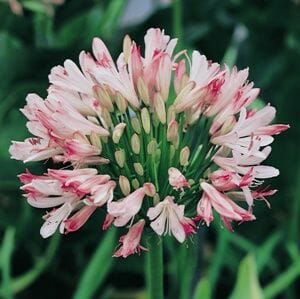Growing Agapanthus: A Complete Guide to Beautiful Blooms
Growing Agapanthus: A Complete Guide to Beautiful Blooms
Blog Article
Grasping the Art of Agapanthus Care: Vital Actions for Healthy Growth and Vibrant Flowers
In the world of horticulture, the growing of agapanthus stands as a satisfying endeavor for those who seek to support these stylish blooming plants. From picking the right selection to mastering trimming techniques, the journey towards cultivating flourishing agapanthus plants is multifaceted and holds the crucial to opening the complete possibility of these herb gems.

Picking the Right Agapanthus Range

When choosing the right Agapanthus range for your yard, consider variables such as environment viability, bloom shade, and growth behavior. Agapanthus, frequently known as Lily of the Nile or African lily, can be found in a variety of colors ranging from shades of blue and purple to white. Pick a bloom shade that enhances your existing garden combination to develop a harmonious landscape. Furthermore, take into consideration the environment in your region to guarantee the Agapanthus range you select can prosper in your certain conditions. Some ranges are much more tolerant of cold temperature levels, while others favor warmer environments. Understanding the growth behavior of different Agapanthus ranges is essential for proper positioning within your garden. Some varieties have a clumping growth routine, ideal for borders or containers, while others have a more spreading nature, suitable for ground cover or mass plantings. By very carefully assessing these aspects, you can choose the perfect Agapanthus range to improve the appeal of your garden.
Ideal Growing Problems
Taking into consideration the optimal environmental needs is important for effective Agapanthus farming. Agapanthus plants are sensitive to cool temperature levels and must be protected from frost throughout wintertime months.
To guarantee healthy development and vivid flowers, plant Agapanthus bulbs at a depth of about 2-4 inches and space them 8-12 inches apart. Mulching around the base of the plants helps preserve dampness and suppresses weed development.
Watering and Fertilizing Tips
Maintaining correct wetness degrees and providing necessary nutrients are crucial elements in the treatment program for Agapanthus plants. When it pertains to watering Agapanthus, it is critical to strike an equilibrium. If overwatered, these plants choose consistently damp dirt yet are prone to root rot. Throughout the expanding period, water deeply as soon as a week, ensuring the dirt is well-draining to protect against waterlogging. In hotter climates or throughout periods of dry spell, even more constant watering might be necessary to maintain the soil evenly damp. Nevertheless, you can look here lower watering in the winter months to stop waterlogged problems.
Feeding Agapanthus is essential for advertising healthy growth and respected flowers. Apply a balanced fertilizer, such as a 10-10-10 formula, in the early springtime as new growth emerges. By adhering to these watering and feeding pointers, you can guarantee your Agapanthus plants prosper and generate vivid, lasting blooms.
Trimming Strategies for Agapanthus
Trimming Agapanthus plants at the suitable times and with proper strategies is important for preserving their health and wellness and advertising ideal growth and flowering. The suitable time to prune Agapanthus is in late winter or early spring before brand-new growth arises.
For flowered stems, wait till the flowers have actually withered and afterwards cut them back to the base. This not only cleans the plant's appearance but likewise motivates the development of new blossom buds. Deadheading spent blossoms can additionally reroute the plant's energy right into producing even more flowers instead than setting seeds. However, if you wish to accumulate seeds for propagation, leave some blossoms to fully grown and completely dry on the plant.
Bear in mind to utilize tidy, sharp devices to make specific cuts and decrease the threat of introducing illness. Agapanthus. Routine pruning will certainly aid maintain your Agapanthus looking cool and healthy and balanced while making certain a plentiful display screen of beautiful blooms
Handling Typical Insects and Illness
After ensuring appropriate pruning techniques for Agapanthus, it is important to resolve usual bugs and conditions that can impact the health and wellness and vigor of these plants. One usual parasite that influences Agapanthus is the Agapanthus gall midget.
Furthermore, Agapanthus plants can suffer from root rot if they are grown in improperly draining pipes soil. By being attentive and taking prompt click for more info activity versus conditions and parasites, you can assist your Agapanthus plants grow and produce dynamic blossoms. Agapanthus.

Verdict
Finally, mastering the art of agapanthus treatment entails selecting the ideal variety, providing perfect planting conditions, proper watering and feeding, suitable trimming methods, and dealing with usual bugs and illness. By adhering to these crucial actions, you can ensure healthy development and lively blooms for your agapanthus plants. Remember to on a regular basis monitor and maintain your plants to advertise their overall wellness and durability.
To guarantee healthy development and vibrant flowers, plant Agapanthus bulbs at a deepness of about 2-4 inches and area them 8-12 inches apart. By complying with these watering and feeding suggestions, you can ensure your Agapanthus plants prosper and produce lively, lasting blooms.
One usual bug that influences Agapanthus is the Agapanthus gall midge. view Furthermore, Agapanthus plants can suffer from origin rot if they are grown in improperly draining dirt. By following these vital steps, you can guarantee healthy growth and vivid blooms for your agapanthus plants.
Report this page